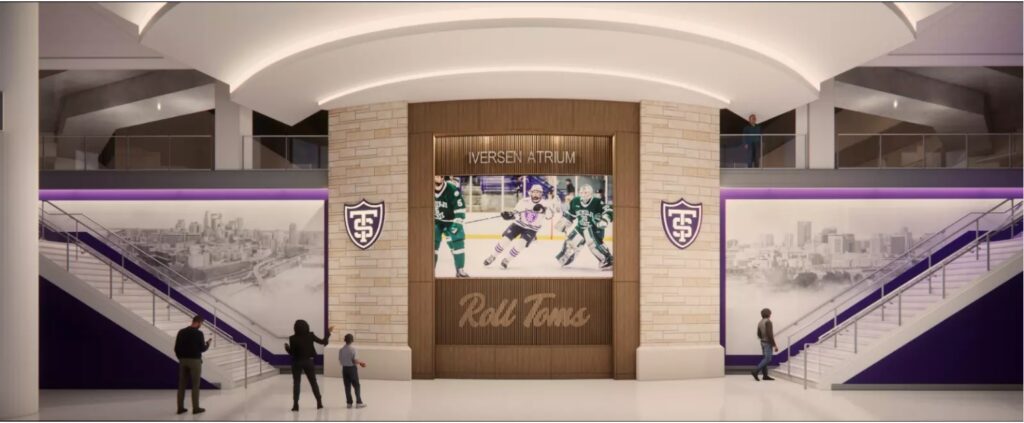A new collaboration between students, faculty and St. Paul artists explores the connections between urban art and community identity in the Midway neighborhood. Urban Art, Landscape and St. Paul Community Stories is part of the College of Arts and Sciences' SOLV Initiative.
“For over a century this neighborhood has been a vital center for the city, and home to many small businesses and restaurants,” said Heather Shirey, associate professor and director of graduate studies in art history. “Midway has historically been an affordable neighborhood with a great deal of ethnic and racial diversity, but there are serious concerns about how new developments might destabilize this. Right now, Midway is undergoing tremendous transformation as a result of the light rail line and the new soccer stadium. In this context, we are especially interested in how art might serve to activate community identity as a response to gentrification.”
Shirey, along with Todd Lawrence, associate professor of English, and Paul Lorah, associate professor of geography, have been working with students from across disciplines including art history, geography and cultural studies to document urban art – from tags and stickers to large commissioned murals – found in the Midway neighborhood. These art forms, said Shirey, help to shape the shared environment of a neighborhood.
“I hope that we’ll be able to create documentation, interpretation and analysis of data that will contribute to the mission of our community partner, Midway Murals,” she said. “I also hope that our research will allow for those who are most deeply invested in the Midway neighborhood – residents and business owners – to share their experiences and to be seen, heard and recognized.”
Chioma Uwagwu, a junior majoring in both communication and journalism and in American culture and difference, said the team-based research project gave her a new appreciation for what is considered art, along with an opportunity to explore ethics.
“How do I learn being ethical in my field?” Uwagwu said. “How do I walk through a step-by-step consent agreement? How do we get out there and show we care very much about this neighborhood? Let me prove it to you. This project is rocketing me forward with skills I will use after I leave St. Thomas.”
For junior art history major Summer Erickson, working on the project gave her invaluable firsthand experience of what it’s like to be an outsider trying to earn the trust of a community.
“You have to let them know you’re not trying to take anything from them,” Erickson said. “That you’re not going to take their stories or voice. How do we go out and make sure we aren’t trying to change them? We are outsiders. We have to make sure we’re hyperaware of that and they’re comfortable with us telling their stories. They’re a partner, not someone we’re investigating.”
The St. Thomas team is currently working to create a database for their findings. They are putting together Story Maps to make the works of art and the stories they tell accessible to a broad audience, said Shirey.
“Simply documenting the art is quite important, as urban art is extremely ephemeral – here one day, gone the next,” Shirey said. “We are also in the process of engaging with the community by way of interviews with artists, business owners, and community members. This will allow the stories to really bring life to our analysis of the art.”
Shirey said it has been amazing to see students take ownership of different aspects of the project.
“We designed an urban art inventory form and taught them how to use it, but they’ve really made it their own,” she said. “They’ve refined the questions, created an online version of the form that is more efficient and accessible, and they’ve spent many hours in the neighborhood documenting the art.”
The project is continuously evolving, said Erickson.
“We’re not planning on being done with this anytime soon,” she said. “We want to keep delving into Midway. If we feel we’ve done Midway justice, we can expand it to another area in the Twin Cities.”
The group will be holding an event on May 2 at the create[space] in Anderson Student Center where they’ll team up with STELAR to showcase 360 images from the project in virtual reality. There will also be interactive stations highlighting what they’ve learned from their research.







